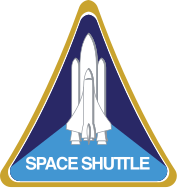Launch On Need
| Mission type | Crew rescue |
|---|---|
| Mission duration | 4 days |
| Spacecraft properties | |
| Spacecraft type | Space Shuttle |
| Crew | |
| Crew size | 4 |
| Members | None assigned |
| Start of mission | |
| Launch date | Flight Day 45 Relative to original mission |
| Launch site | Kennedy LC-39 |
| End of mission | |
| Landing date | Flight Day 49 |
| Orbital parameters | |
| Reference system | Geocentric |
| Regime | Low Earth |
| Inclination | 51.6 degrees |
| Docking with ISS | |
| Docking date | Flight Day 47 |
| Undocking date | Flight Day 48 |
| Time docked | < 1 day |
 |
|
| Mission type | Crew rescue |
|---|---|
| Mission duration | 7 days |
| Spacecraft properties | |
| Spacecraft | Space Shuttle Endeavour |
| Crew | |
| Crew size | 4 up 11 down |
| Members |
Christopher Ferguson Eric A. Boe Robert S. Kimbrough Stephen G. Bowen |
| Landing |
Scott D. Altman Gregory C. Johnson Michael T. Good Megan McArthur John M. Grunsfeld Michael J. Massimino Andrew J. Feustel |
| Orbital parameters | |
| Reference system | Geocentric |
| Regime | Low Earth |
| Inclination | 28.5 degrees |
 |
|
Space Shuttle missions designated STS-3xx (officially called Launch On Need (LON) missions) were rescue missions which would have been mounted to rescue the crew of a Space Shuttle if their vehicle was damaged and deemed unable to make a successful reentry. Such a mission would have been flown if Mission Control determined that the heat shielding tiles and reinforced carbon-carbon panels of a currently flying orbiter were damaged beyond the repair capabilities of the available on-orbit repair methods. These missions were also referred to as Launch on Demand (LOD) and Contingency Shuttle Crew Support. The program was initiated following loss of Space Shuttle Columbia in 2003. No mission of this type was launched during the Space Shuttle program.
The orbiter and four of the crew which were due to fly the next planned mission would be retasked to the rescue mission. The planning and training processes for a rescue flight would allow NASA to launch the mission within a period of 40 days of its being called up. During that time the damaged (or disabled) shuttle's crew would have to take refuge on the International Space Station (ISS). The ISS is able to support both crews for around 80 days, with oxygen supply being the limiting factor. Within NASA, this plan for maintaining the shuttle crew at the ISS is known as Contingency Shuttle Crew Support (CSCS) operations. Up to STS-121 all rescue missions were to be designated STS-300.
In the case of an abort to orbit, where the shuttle is unable to reach the ISS orbit and the thermal protection system inspections suggest the shuttle cannot return to Earth safely, the ISS may be capable of descent down to meet the shuttle. Such a procedure is known as a joint underspeed recovery.
To save weight, and to allow the combined crews of both shuttles to return to Earth safely, many shortcuts would have to be made, and the risks of launching another orbiter without resolving the failure which caused the previous orbiter to become disabled would have to be faced.
A number of pieces of Launch on Need flight hardware were built in preparation for a rescue mission including:
The Remote Control Orbiter (RCO), also known as the Autonomous Orbiter Rapid Prototype (AORP), was a term used by NASA to describe a shuttle that could perform entry and landing without a human crew on board via remote control. NASA developed the RCO in-flight maintenance (IFM) cable to extend existing auto-land capabilities of the shuttle to allow remaining tasks to be completed from the ground. The cable is approximately 28 feet (8.5 m) long, weighs over 5 lb (2.3 kg), and has 16 connectors.
...
Wikipedia
